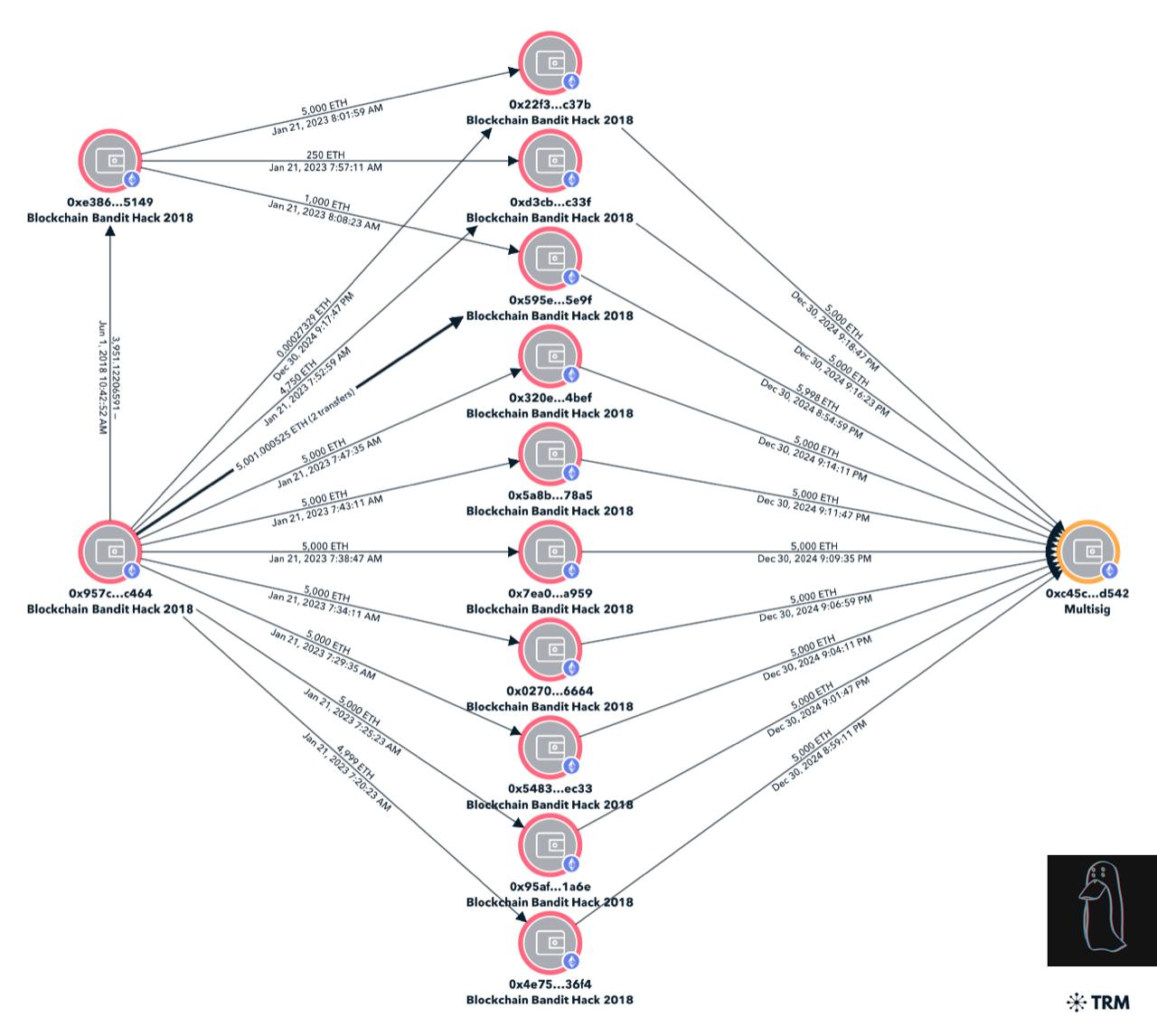-
Wallets linked to the infamous “Blockchain Bandit” have resurfaced after years of inactivity, transferring a terrifying 51,000 ETH ($172 million) to a secure multi-signature wallet.
-
This latest transfer from the top 10 inactive wallets used in 2018 marks a significant re-emergence of a notorious figure in cryptocurrency theft.
-
Experts warn that this consolidation could be a precursor to money laundering attempts or the planning of new crypto exploits, which would cause panic in the crypto community.
The latest activity of the “Blockchain Bandit” is raising concerns about possible liquidations or funding of new ventures in the crypto world with the transfer of $172 million in ETH.
Who is the Blockchain Bandit?
The term “Blockchain Bandit” refers to a hacker who steals significant amounts of cryptocurrency by exploiting weaknesses in private key security in the Ethereum blockchain. A recent analysis by crypto researcher ZachXBT revealed that all of the wallets involved in today’s broadcast have been inactive since 2018, suggesting that there may be a potentially alarming intent behind this sudden activity.

Blockchain Bandit made headlines by systematically targeting Ethereum wallets that used poorly generated or weak private keys. Using automated scripts, the hacker successfully carried out the thefts by scanning vulnerable addresses in the blockchain and alerted the victims days later. This person is believed to have stolen more than 50,000 ETH through more than 10,000 wallets.
This attack method has been particularly noted by experts like security analyst Adrian Bednarek, who documented that Blockchain Bandit uses a pre-generated list of keys to scan vulnerable wallets. Bednarek noted that some wallets use extremely simple keys, making them easy targets.
“You see, in Ethereum, private keys are 256-bit numbers. It is almost impossible to catch someone by brute force. But some wallets generated weak private keys using terrible random number generators. This approach made him almost unstoppable,” said analyst Web3 Pix.
Why is he active again after five years?
Reusing these wallets can be seen as a strategic move by Blockchain Bandits, especially considering this is the first major transaction since 2018. While there was some progress in January 2023, today’s move to a multi-signature wallet is concerning as it could indicate to plans for the laundering or liquidation of these assets.
Moving large amounts of ETH into a multi-signature wallet usually involves preparing for high-risk transactions. Such activity may mean that the hacker plans to use decentralized exchanges or mixing services to hide the origin of the funds; This means laundering stolen property.
Alternatively, consolidation of funds could prevent liquidation, raising concerns about possible impacts on Ethereum market prices. Large-scale sell-offs could inadvertently affect liquidity and investor sentiment in the cryptocurrency market.
Finally, there is the most worrisome possibility that the consolidation of these funds could increase more malicious activity. This could include fees to fund transactions for future exploit attempts or spread transactions across various blockchain platforms.
The prospect of such a well-known hacker becoming active again raises significant concerns for the crypto ecosystem; In particular, in 2023, $2.3 billion will be lost due to cyber attacks, which is a significant increase compared to previous years. Ethereum continues to be the network most targeted by recent security breaches.
Conclusion
The re-emergence of Blockchain Bandits with significant ETH transfers is a stark reminder of the ongoing weaknesses in the crypto landscape. Stakeholders must be mindful of possible market impacts and growing cyber threats when hackers’ intentions are revealed. Keeping a close eye on such developments can help the cryptocurrency community reduce risks and secure their assets more effectively.





